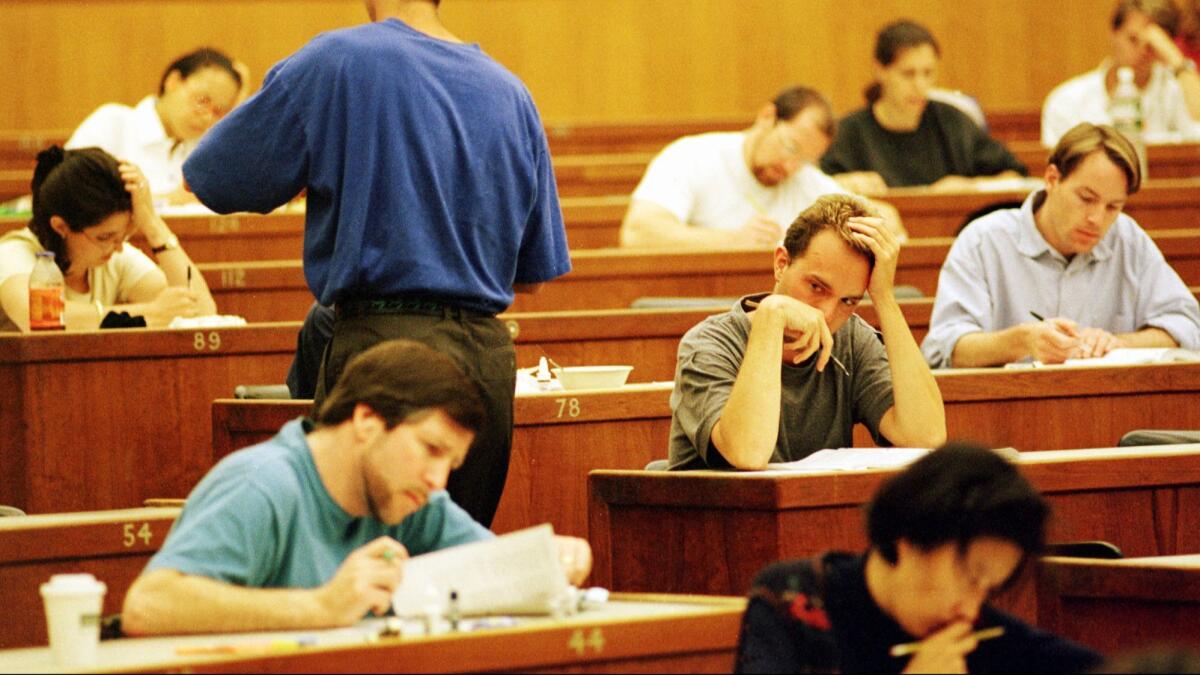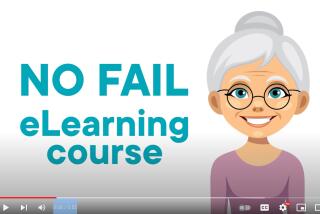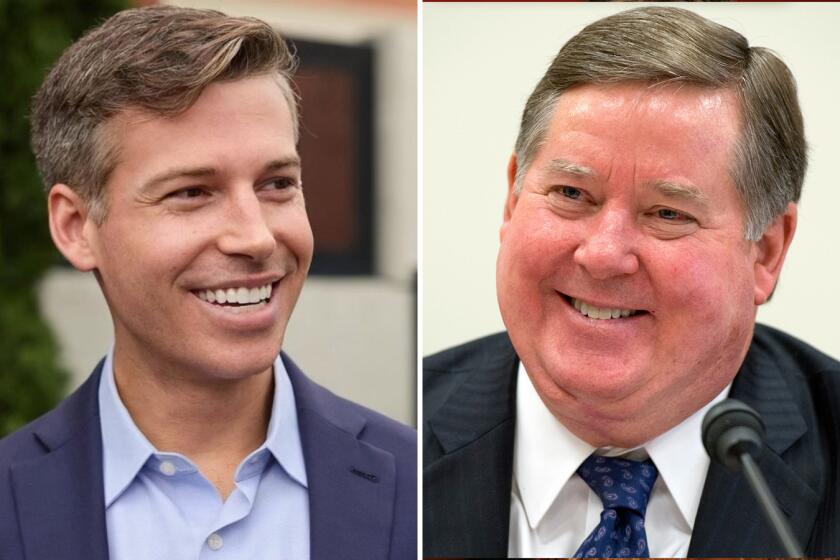California is easing its bar exam score, which critics argue fails to measure ability

For more than three decades, California has clung to one of the nation’s toughest testing standards for law school students hoping to practice law in the most populous state in the country.
But this month, the California Supreme Court, which oversees the state bar, agreed to lower the passing score for the exam, a victory for law school deans who have long hoped the change would raise the number of Black and Latino people practicing law.
After holding virtual meetings with law school graduates and deans, the state’s highest court this month permanently lowered the passing score, allowed for law school graduates to work temporarily under supervision with provisional licenses during the pandemic and permitted graduates to take the bar exam remotely in early October.
“There is absolutely no evidence that shows having a higher score makes for better lawyers,” said UCLA School of Law Dean Jennifer L. Mnookin, a longtime supporter of lowering the passing score. “There is significant evidence that it reduces the diversity of the bar.”
Forty percent of California’s population is white, 60% are people of color. But 68% of California lawyers are white, and only 32% are people of color, according to a new report by the State Bar of California.
UC Berkeley School of Law Dean Erwin Chemerinsky said the court’s action would not have come now if it were not for the coronavirus outbreak.
“I think they were trying to fashion a compromise that took into account the unique circumstances” of the health crisis, he said.
The Black Lives Matter movement also might have influenced the court.
“On the one hand, the pressure to lower the score has existed for some time,” Chemerinsky said. “On the other hand, the racially disparate impact of the higher cut score may have had particular importance for the court in light of what has happened in the last few months.”
The court did not give the law deans and students what they asked for: a remote bar exam in September and the right to practice law permanently with a diploma but no test.
Chemerinsky said he was not surprised the court refused to grant graduates a complete “diploma privilege.” California, unlike other states, has law schools that are unaccredited or accredited only by the state. Some of those schools have a bar exam pass rate of less than 10%, the dean said.
The spread of COVID-19 forced the cancellation of the July bar exam, and the court had to decide when the next exam would be held and whether it could be taken remotely. The court took that opportunity to address the bar exam score.
“The cut score issue has been around a long time, and the court has never stopped thinking about it,” said a source who was not authorized to speak publicly but was familiar with the decision-making process.
Some speculated that the results of the February bar exam may also have influenced the court.
In February, a time when many graduates who failed the bar the first time retake it, only 26.8% of all test takers passed.
Of the first-time test takers from law schools accredited by the American Bar Assn., considered the top schools in the state, 51.7% of white graduates passed, compared with 5% of Black grads, 32.6% of Latinos and 42.2% of Asians.
Whether the exam is culturally biased has been a question for law journals over the years, and critics have written that it fails to measure the real abilities required to be good lawyers.
The average national bar exam passing score is 1350. New York’s is 1330. California’s was 1440 until the court permanently reduced it to 1390. Both Chemerinsky and Mnookin estimated that change will raise the pass rate by 10%. The court did not apply the new score retroactively.
Victor D. Quintanilla, a professor at Indiana University’s Maurer School of Law and an adjunct faculty member of the Department of Psychological and Brain Sciences, said pass rates for the California bar have been falling for all applicants, but the effects of California’s particularly high test score have disproportionately hurt racial and ethnic minorities.
He is part of a foundation-funded team of law professors and social psychologists who have been studying California’s bar exam results for the last 10 years. He said 19.5% of white test takers never pass the bar even after multiple attempts. By contrast, he added, 46.9% of Black test takers and 30.5% of Latinos never pass.
Quintanilla, who also chairs the Assn. of American Law Schools section on the empirical study of legal education, said Black people and Latinos generally do worse than white counterparts on “high-stakes” standardized tests, such as the SAT.
Studies attribute the differences to disparities in educational opportunities and other socioeconomic factors. Social psychologists also have found that people of color worry when taking standardized tests if the results might reinforce negative stereotypes, and that anxiety hurts their performance, Quintanilla said.
“There is social psychological research that shows that even when people of color take an exam and do well, that exam may not reflect their true potential,” said Quintanilla, who has a law degree and is getting his doctorate in social psychology.
The team studying the bar, which includes faculty from Stanford University and USC, will deliver findings to the California Supreme Court next month. Quintanilla said he was glad that the court lowered the score, but added: “It is clear from the data that there are substantial benefits to be gained by moving further still.”
The seven-member state high court has two white justices, one Black justice, one Latino and three Asian Americans. Chief Justice Tani G. Cantil-Sakauye and Justices Goodwin H. Liu and Joshua P. Groban participated in a three-hour remote meeting with 2,700 law students and graduates. Liu, Groban and Justice Mariano-Florentino Cuéllar joined a separate remote meeting with law school deans.
The court refused three years ago to lower the passing score, the second highest in the nation after Delaware’s. In a written decision, the court noted that the pass rate had risen and fallen over the decades, with periods of pass rates for first-time test takers ranging from the upper 60th to the middle 70th percentiles from 1989 to 1997, in 2001, and from 2006 to 2013.
“The pass score did not appear a matter of controversy during these periods,” the court said. It added that the data about the pass rate did not support adjusting the score but urged the state bar to continue to study the question.
Janet L. Brewer, who was a bar trustee when the court first considered dropping the passing score, had expressed concern then that a large drop might lead to incompetent people practicing law. But the lawyer said the drop approved by the court was “pretty inconsequential.”
In a letter to the bar this month calling for the score cut, the court spoke of trying to find “the safest, most humane and practical” options for licensing law graduates during the pandemic.
“Some graduates have lost job offers,” the court said. “Many are about to lose health insurance, cannot find a job to pay bills, or are in fear of deportation if they cannot enter the bar in time to retain job offers. Many more have student loan payments that become due in mid-November, but without a law license and the ability to work, they fear going into default.”
The justices also directed the bar to develop the provisional license program allowing 2020 California graduates to practice law under the supervision of licensed lawyers through February 2022.
“This time frame will afford the 2020 graduates several opportunities to take the exam of their choosing through February 2022 and await the exam results,” the court said.
The California bar is the regulatory arm of the California Supreme Court and submits professional rule changes and bar exam matters for the court to review. The court has the final say over bar exam scores, as do most state high courts across the country.
More to Read
Sign up for Essential California
The most important California stories and recommendations in your inbox every morning.
You may occasionally receive promotional content from the Los Angeles Times.











